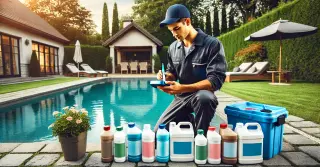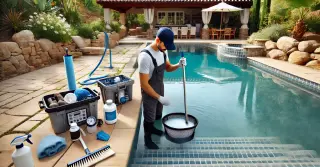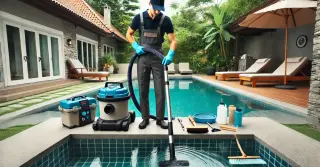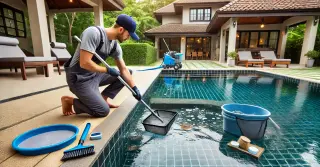Pool Chemical Balance Weehawken NJ

Keeping your pool's chemical balance in check is essential for a safe and enjoyable swimming experience. Balanced chemicals inhibit algae and bacteria, maintain clear, clean water, and protect the pool's surface and equipment.
- Maintaining Proper pH: The pH level of your pool water indicates its acidity or alkalinity. The ideal pH range is between 7.2 and 7.6. Acidic water from low pH can irritate skin and corrode equipment. If the pH is too high, the water becomes alkaline, leading to cloudy water and scaling on the pool surfaces. Frequent pH testing and adjustments is essential to maintain a comfortable and safe swimming environment.
- Monitoring Chlorine Levels: Chlorine plays a crucial role in pool sanitation, killing bacteria, algae, and other harmful microorganisms. The proper chlorine level is between 1-3 ppm. Low chlorine levels cause unsanitary water, with bacteria and algae proliferating. High chlorine levels result in skin and eye irritation and create a strong chlorine smell. Regularly testing and adjusting chlorine levels ensures sanitation and comfort.
Optimal Alkalinity LevelsTotal alkalinity is a crucial element of pool chemistry. Alkalinity buffers pH levels, avoiding sudden pH changes. Proper total alkalinity levels range from 80 to 120 ppm.
- Stabilizing pH Levels: Correct alkalinity levels ensure stable pH, preventing rapid changes that can cause skin irritation and damage to pool surfaces. If alkalinity is too low, pH levels can fluctuate wildly, making consistent balance difficult. Excessive alkalinity results in cloudy water and scaling. Consistently monitoring and adjusting alkalinity levels is crucial for stable and balanced water.
- Balancing Calcium Levels: Calcium hardness indicates the calcium level in pool water. Proper calcium hardness levels range from 200 to 400 ppm. Low calcium levels result in corrosive water, harming surfaces and equipment. Excessive calcium causes scaling and water cloudiness. Consistently monitoring and adjusting calcium hardness is important for protecting your pool and ensuring clear water.
Safe Handling of Pool ChemicalsProper handling and storage of pool chemicals is essential for both safety and effectiveness. Store chemicals in a cool, dry place, away from direct sunlight and out of reach of children and pets. Follow the manufacturer's instructions for dosing and application.
- Measuring and Mixing Chemicals: Accurately measuring pool chemicals is crucial for maintaining balance. Using incorrect amounts can disrupt the chemical balance and affect water quality. Always use a clean, dry measuring cup or scoop and avoid mixing chemicals directly. Mix chemicals in water if required, following the instructions carefully.
- Awareness of Chemical Reactions: Some chemicals can react dangerously when combined. Never mix chlorine with acid, for example. Being aware of these interactions helps prevent accidents and ensures safe handling. Store chemicals apart and handle each carefully to avoid harmful reactions.
Keeping your pool's chemical balance is crucial for safety, cleanliness, and enjoyment. By consistently testing and adjusting pH, chlorine, alkalinity, and calcium, you maintain optimal water conditions.
Proper chemical use and storage further ensure the health and safety of your pool and its users.




